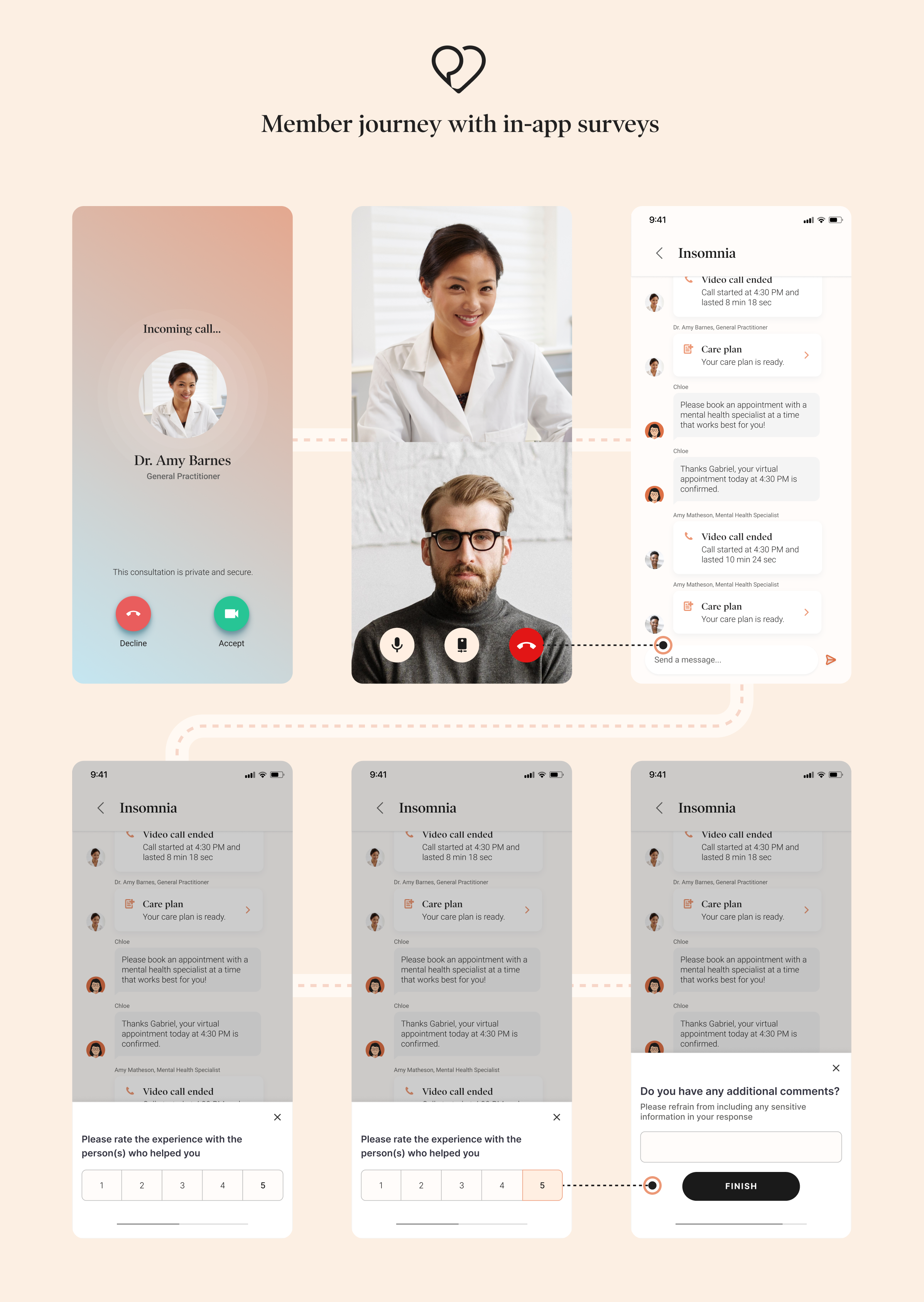Member experience drives program and service innovation at Dialogue. After all, our mission is to help people improve their well-being, and their experience with our services is at the core of that mission.
But what happens when user experience is not a priority within a company? Studies show that:
- 21% of people abandon an app after one use.
- 38% will disengage if the content or layout is unattractive.
- 73% believe a good experience is crucial for loyalty.
This means that members who have a positive experience on the Dialogue app are more likely to stay engaged, utilizing Dialogue as a consistent resource in managing their health and well-being.
Historically, we've used the Net Promoter Score (NPS) as our go-to metric — it's great for tracking progress over time. However, in 2023, we saw that our implementation of NPS wasn't precise enough to show the difference between individual improvements made.
Looking forward to 2024, our plan focuses on enhancing member experience, and that calls for something focused. So, we developed the Member Experience Scorecard to our toolbox. It brings together real-time feedback from the app and other key data, like satisfaction surveys, app store ratings, and user activity. This gives us a richly-detailed picture of member experiences, helping us make just the right tweaks to our services and app.
How Dialogue learned and iterated to better understand member experience
Due to our implementation of NPS, there was a delay between a user's experience and when we gathered their feedback, making it challenging to pinpoint what exactly influenced their scoring. Shifts in sentiment were apparent, but we struggled to discern the specific incidents or factors influencing these ebbs and flows. Without this insight, we couldn’t address the right problems effectively or efficiently.
In our early years, NPS was leveraged to help us make important business decisions, we now wanted to address the potential delays. Our solution was to strategically embed two in-app surveys during key interaction moments, offering the dual advantage of immediacy and specificity. These insights not only provide quicker feedback, but also add depth to what we know. With timely and relevant data, we can promptly update our services and continually enhance our members' experience. We evolved from laggards reacting to delayed feedback, to leaders setting the pace for continuous improvement cycles — all in pursuit of elevating our member experience.

What does this mean for organizations? By introducing our member experience scorecard in conjunction with the current NPS, Dialogue will gain a multi-faceted, clear understanding of members' experiences. This dual approach will provide us with a broader data set, allowing us to make strategic decisions with greater confidence and precision to enhance their support.
How does Dialogue’s new member experience scorecard benefit your members?
By gaining a deeper insight into your members' experience, we can strive towards creating more seamless, user-friendly interactions with our services and app. It also empowers members to actively participate in providing feedback, giving them a voice in the enhancements and modifications that directly impact their well-being and that of their loved ones.
And what does this mean for organizations?
Members who trust the Dialogue app and use it frequently are more likely to see the positive health outcomes they’re looking for. For HR leaders like you, this means a measurably healthier and more productive workforce, and bigger cost-savings in the long term.
What insights have we learned so far?
In our quest for a comprehensive overview of member experiences, we faced a key problem: different teams within Dialogue were using distinct evaluation measures. This varying approach muddled our understanding of how we were faring as a whole, and made company-wide coordination a complex task.
We addressed this issue by developing a Member Experience Dashboard. This tool integrates several evaluation metrics into one succinct view, including both behavioural and attitudinal measures. Behavioural metrics highlight areas in our services or product that might not meet member expectations, while attitudinal metrics provide context as to why this might be the case. This comprehensive blend of metrics offers a holistic perspective of our product offering, guiding us in making faster, more informed, and more strategic decisions.
So far, it's been an enriching journey of learning and improvement. We’ve learned that our in-app surveys connect with our members exceedingly well, seeing higher response rates compared to the traditional NPS method. We've also gained valuable insights into how members interact with our platform. While some members navigated differently than we anticipated, it highlighted areas where we can further fine-tune our app's member experience.
As we head into 2024, we're excited to leverage these insights to make strategic enhancements. With constant iteration, an unwavering commitment to improvement, and members who are willing to point us in the right direction, we're confident of creating an even more intuitive and user-friendly platform.
In the end, we've made great strides towards a unified and accurate representation of how we're doing as an organization, allowing us to pinpoint areas of success and improvement. Through constant learning and adaptation, we're working towards giving our members the best possible experience.




 Canada (EN)
Canada (EN)
 Global (EN)
Global (EN)







